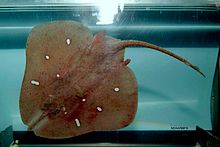
The Squaliformes are an order of sharks that includes about 126 species in seven families.
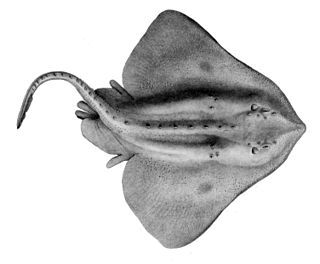
Skates are cartilaginous fish belonging to the family Rajidae in the superorder Batoidea of rays. More than 150 species have been described, in 17 genera. Softnose skates and pygmy skates were previously treated as subfamilies of Rajidae, but are now considered as distinct families. Alternatively, the name "skate" is used to refer to the entire order of Rajiformes.

An egg case or egg capsule, often colloquially called a mermaid's purse, is the casing that surrounds the eggs of oviparous chondrichthyans. Living chondricthyans that produce egg cases include some sharks, skates and chimaeras. Egg cases typically contain one embryo, except for big skate and mottled skate egg cases, which contain up to 7 embryos. Oviparity is completely absent in the superorder Squalomorphii. Egg cases are also thought to have been produced by some extinct chondricthyan groups, such as hybodonts and xenacanths.

Rajiformes is one of the four orders in the clade Batomorphi, often referred to as the superorder Batoidea, flattened cartilaginous fishes related to sharks. Rajiforms are distinguished by the presence of greatly enlarged pectoral fins, which reach as far forward as the sides of the head, with a generally flattened body. The undulatory pectoral fin motion diagnostic to this taxon is known as rajiform locomotion. The eyes and spiracles are located on the upper surface of the head and the gill slits are on the underside of the body. Most species give birth to live young, although some lay eggs enclosed in a horny capsule.

The New Zealand rough skate, Zearaja nasuta, is a skate of the genus Zearaja, found around New Zealand at depths between 10 and 1,500 m. Its length is up to 1 m. This species has been assessed by the IUCN as of Least Concern. In June 2018 the New Zealand Department of Conservation classified the New Zealand rough skate as "Not Threatened" with the qualifier "Conservation Dependant" under the New Zealand Threat Classification System.

Bathyraja is a large genus of skates in the family Arhynchobatidae.

Dipturus is a large genus of skates native to the Pacific, Atlantic, and Indian Oceans. They were formerly included in Raja. Some species initially moved to Dipturus were later placed in Dentiraja, Spiniraja, and Zearaja.

Raja, also known as raia, is a genus of skates in the family Rajidae containing 16 species. Formerly a wastebasket genus, many species historically categorized here have been moved to other genera in the family, such as Amblyraja, Beringraja, Dipturus, Leucoraja and Rostroraja. Raja are flat-bodied, cartilaginous fish with a rhombic shapes due to their large pectoral fins extending from or near from the snouts to the bases of their tails. Their sharp snouts are produced by a cranial projection of rostral cartilage. The mouth and gills are located on the underside of the body. They may be either solid-coloured or patterned, and most skates have spiny or thorn-like structures on the upper surface, while some species contain weak electrical organs within their tails. Mating typically occurs in the spring and the female lays numerous eggs per clutch which are encapsulated in leathery cases, commonly known as "mermaid’s purses". Species vary in size, ranging from about 40 to 140 cm (1.3–4.6 ft) in length. These bottom-dwellers are active during both day and night, and typically feed on molluscs, crustaceans and fish. Raja skates are found in the East Atlantic, also in the Mediterranean, and western Indian Ocean, ranging from relatively shallow water to a depth of 800 m (2,600 ft). Skates and related species have fossil records dating from the Upper Cretaceous period, thus this well-adapted species is quite ancient.

Amblyraja is a genus of skates that primarily are found in the Atlantic, but species also occur in the East and North Pacific, the Arabian Sea, the sub-Antarctic, and off Southern Australia and New Zealand.

Leucoraja is a genus of hardnose skates in the family Rajidae, commonly known as the rough skates. They occur mostly on continental shelves and slopes in the north-western and eastern Atlantic Ocean, the Mediterranean Sea, the south-western Indian Ocean, and Australia.

Pavoraja is a genus of skates in the family Arhynchobatidae from deeper waters off Australia.
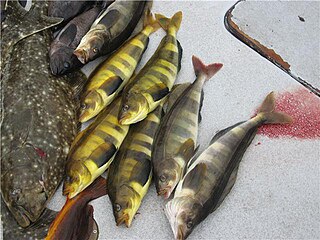
The Atka mackerel is a mackerel in the family Hexagrammidae. Atka mackerel are common in the northern Pacific Ocean, and are one of only two members of the genus Pleurogrammus - the other being the Arabesque greenling. The Atka mackerel was named for Atka Island, the largest island of the Andreanof islands, a branch of the Aleutians.
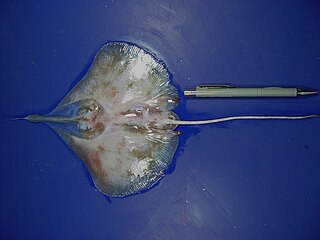
Springeria is a genus of cartilaginous fish belonging to the family Anacanthobatidae, the smooth skates. The two species in this genus are found in the central Western Atlantic.
The Korean skate is a skate in the family Rajidae, and is the sole member of the genus Hongeo. It was previously classified in the genus Raja as Raja koreana until discoveries identified this species as a member of a distinct genus. It is considered Critically Endangered on the IUCN Red List due to overexploitation.

Dentiraja is a genus of skates native to the oceans around Australia. Members of this genus usually grow up to a maximum of 35 – 70 cm, with the longest being Heald's skate, with a maximum length of about 72 cm.
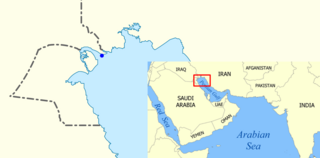
The pita skate is a medium-sized skate in the family Rajidae. The holotype and only known specimen was found in the northern Persian Gulf, in Iraqi waters. It was collected at a depth of less than 15 m (49 ft).
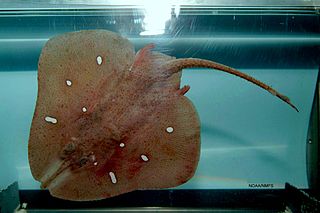
The hook skate or Clark's fingerskate is a medium-sized, but poorly known, deepwater skate." Its distribution is considered patchy and covers the western central and southwest Atlantic, including the east coast of Florida, throughout the Gulf of Mexico, and off Rio Grande do Sul.

The skillet skate is a small-bodied, deepwater skate in the family Rajidae.
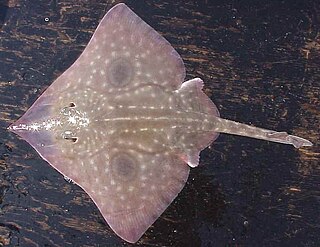
Beringraja is a genus of skates in the family Rajidae with up to six described species. Formerly, they were included in the genus Raja until 2012, when the genus Beringraja was erected for the two species which had multiple embryos per egg capsule. Genetic evidence has led to four additional species being proposed for inclusion in the genus, although this issue has not be completely resolved. These large skates are found in the North Pacific.

The Sydney skate is a species of skate of the family Rajidae native to waters off the east coast of Australia.
